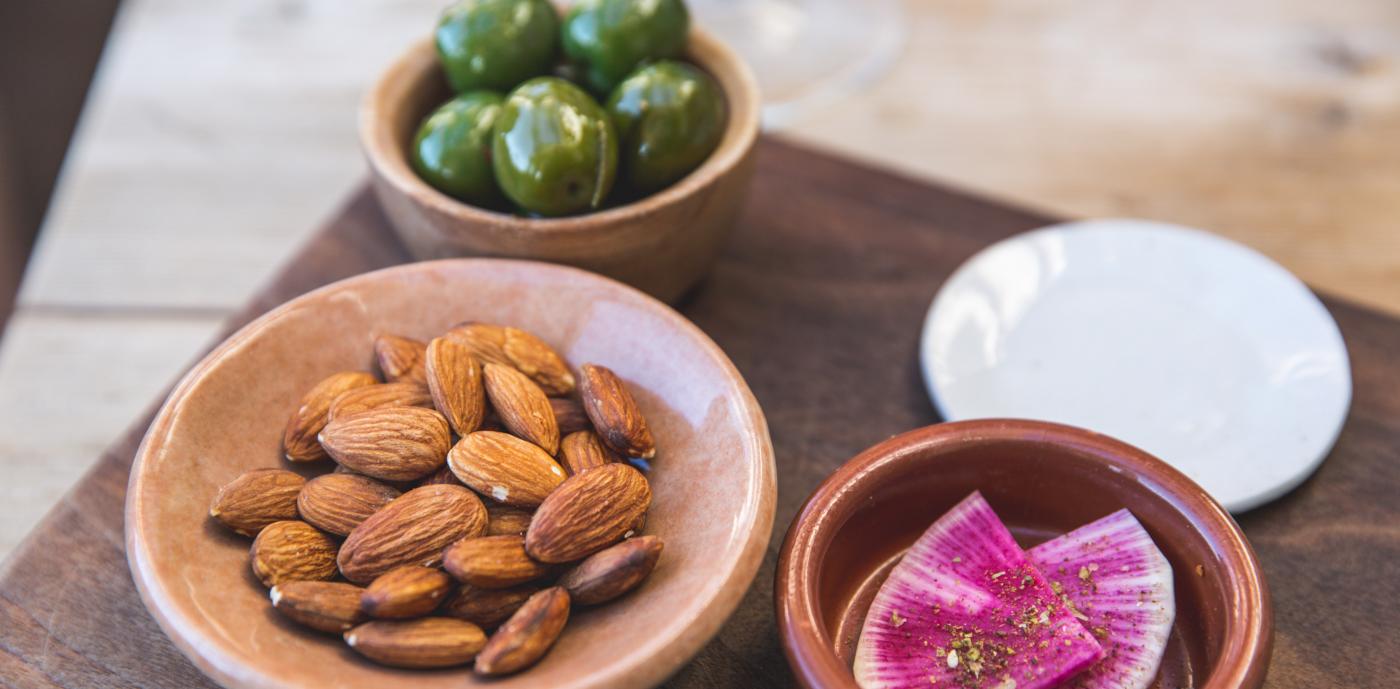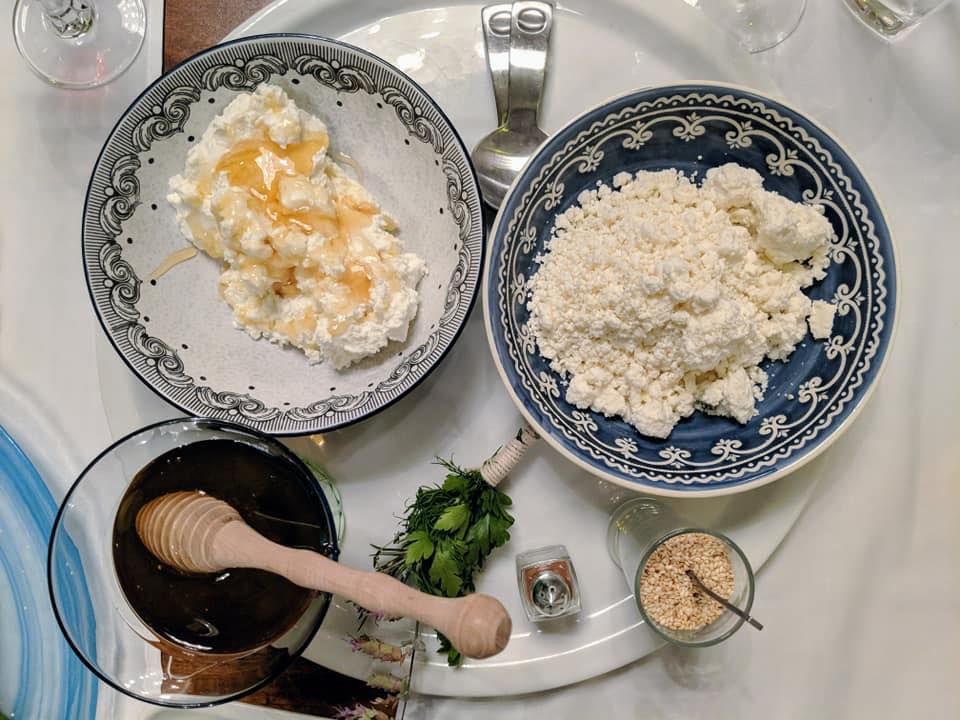In the 1980s, fat came under fire. Low-fat and fat-free products subsequently became all the craze. In recent years, however, nutrition experts have come to largely agree that dietary fat has a place at the kitchen table. People in Mediterranean countries already knew this, as their traditional diets have historically contained moderate amounts of fat, much of it from healthful monounsaturated fats (such as extra virgin olive oil and almonds), omega-3 fats (in foods like oily fish/seafood and walnuts), and polyunsaturated fats in other nuts and seeds.
First things first, though. It’s hard to have a discussion about healthy Mediterranean fats without taking a step back to briefly define dietary fat.
Dietary fats are essential for supplying your body with energy and supporting cell growth. They help your body absorb nutrients and produce important hormones. Healthy dietary fats can be broken into three main types: monounsaturated, polyunsaturated, and saturated.
Monounsaturated fats have one double bond in their fatty acid chain, rendering them liquid at room temperature and hardened when chilled. Common sources of monounsaturated fats include olive oil, avocados, peanuts, and many tree nuts, especially almonds, pecans, hazelnuts and cashews. A hallmark of the Mediterranean Diet is a high monounsaturated-to-saturated fat ratio (more olive oil, less butter). In fact, it’s estimated that Greeks consume about 20 kilograms of olive oil per person per year; that translates to about 4 tablespoons a day, as compared to only half a teaspoon per day on average in the United States.
Polyunsaturated fats have two or more double bonds (poly=many) in their fatty acid carbon chain. There are two main types of polyunsaturated fats: omega-6 fatty acids and omega-3 fatty acids. Dietary sources of omega-6 fatty acids include vegetable oils (e.g., saflower, sunflower, corn, cottonseed, sesame, peanut, canola), while oily fish (e.g., salmon, tuna, anchovies, sardines, mackerel, cod fish oils) are high in omega-3 fatty acids, with smaller amounts of omega-3s found in plant-based sources such as walnuts and seeds (e.g., flax seeds, chia seeds, hemp seeds). As well, studies have shown that pastured/grass-fed meat may contain less total fat and higher amounts of omega-3 fatty acids than grain-fed animals. To this day, in parts of the Mediterranean, it’s not uncommon to see lamb and goat grazing in the foothills and mountains.
Much research suggests that omega-6 fatty acids are inflammatory, while omega-3 fatty acids are anti-inflammatory. Anthropological evidence suggests that the ratio of omega-6 to omega-3 fatty acids as human beings evolved was approximately 1:1, while the ratio today is closer to 16:1. While we’re not recommending that anyone bring a calculator to the table, we do suggest that you follow the Mediterranean example of eating fish at least a couple of times a week, and adding walnuts to salads and dishes to enjoy more omega-3 fats.
Saturated fats, like butter and lard, are solid at room temperature. Red meat, poultry, and full-or reduced-fat dairy products (e.g., yogurt, labneh, cheese) are other dietary sources of saturated fats. While saturated fat was for many years considered a major culprit in heart disease, several recent more nuanced studies have clarified that reducing saturated fat is beneficial when it’s replaced with unsaturated fat, whole grains and/or legumes-but not if we eat refined carbohydrates in place of saturated fat. Fortunately, if you follow a Mediterranean Diet with its high monounsaturated-to-saturated fat ratio, you naturally minimize your intake of saturated fat, eating in a way that Mediterranean cultures understood way ahead of the latest research.
The bottom line? Rather than restricting fat intake in your diet, adopt a Mediterranean Diet, rich in “healthy,” satisfying fats-olive oil, avocados, tree nuts and seeds, peanuts, fish (particularly small, oily fish) and seafood, grass-fed meat and dairy (albeit in moderation)-along with consuming a large assortment of fruits and vegetables, whole grains, and legumes.
READ MORE
Olive Oil: The Core of the Mediterranean Diet
Mediterranean Diet with Dairy May Help with Blood Pressure and Cholesterol
Nuts and Seeds-Nature’s Little Nutritional Powerhouses
Want biweekly Med Diet information and recipes in your Inbox? Sign up for our Fresh Fridays newsletter by clicking the Subscribe button at the bottom of this page!
Join the Make Every Day Mediterranean Club Facebook group for additional information and support.








